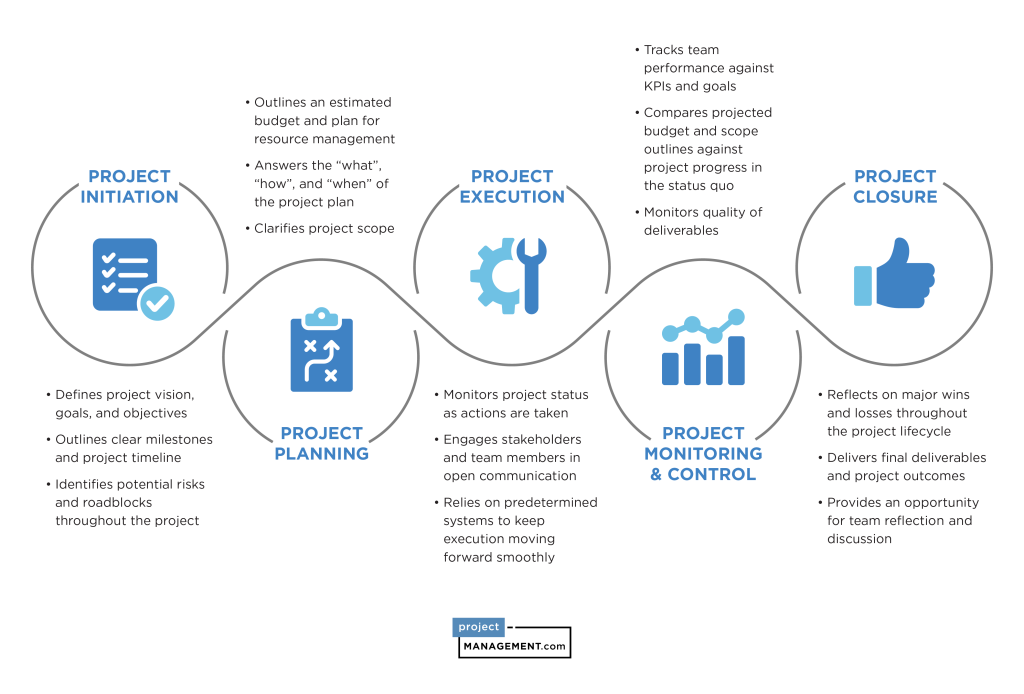Project Management

5 Phases of a Project
Project Initiation
- Defines project vision, goals, and objectives
- Outlines clear milestones, project tasking and project timeline
- Identifies potential risks and roadblocks throughout the project
A team’s performance during the project initiation phase can result in either authorization, delay, or discontinuation of a new project.
The main goal of the project initiation is to ensure that the project meets business needs and that stakeholders and project teams are aligned on the project success criteria throughout the project life cycle.
To achieve the project goal, it’s best to involve internal and external stakeholders from the initiation phase. This way, you can effectively align expectations and increase the likelihood of completing all the deliverables throughout the project management life cycle.
During the initiation phase, the entire project team defines the project idea, and the project sponsor evaluates it and authorizes the project to proceed. The project manager starts the documentation process, which includes the justification, deliverables, risks, estimated cost, and resource requirements.
The project charter is a key deliverable of the project initiation phase and contains all this information. It is the first formal definition of the project. It authorizes the project to exist, establishes the authority of the project manager, and documents high-level requirements, project milestones, and success criteria.
Another important document in the initiation phase is the stakeholder register. This document includes information about all the stakeholders of the project. It identifies the people, groups, and organizations that have an interest in the task, project, and its results.
Approval of the project charter signals the advance of the project to the next phase, the Project Planning Phase.
Project Planning
- Outlines an estimated budget and plan for resource management
- Answers the "what", "how", and "when" of the project plan
- Clarifies project scope
Project Execution
- Monitors project status as actions are taken
- Engages stakeholders and team members in open communication
- Relies on predetermined systems to keep execution moving forward smoothly
Project Monitoring & Control
- Tracks team performance against KPIs and goals
- Compares projected budget and scope outlines against project progress in the status quo
- Monitors quality of deliverables
Project Closure
- Reflects on major wins and losses throughout the project lifecycle
- Delivers final deliverables and project outcomes
- Provides an opportunity for team reflection and discussion
Job Management
Sage 300
We rely on the Sage 300 product line to maintain all our accounting records and rely on the Jobs Module to Manage all Jobs
Manage Jobs
Manage Jobs
Go to Lists > Jobs to track your projects.
Job List
Review all jobs and visualize start and end dates and current status.
From the Job List window, reference the Tasks section to setup phases and cost codes.
Job Reporting
Reference the Reports section to access job-specific reporting. Click on the Job Profitability Report to determine margins for each project, job phase or cost code.
- Sage Accounting provides access to advanced job functionality such as labor burden management, progress-based billing and subcontractor insurance tracking.